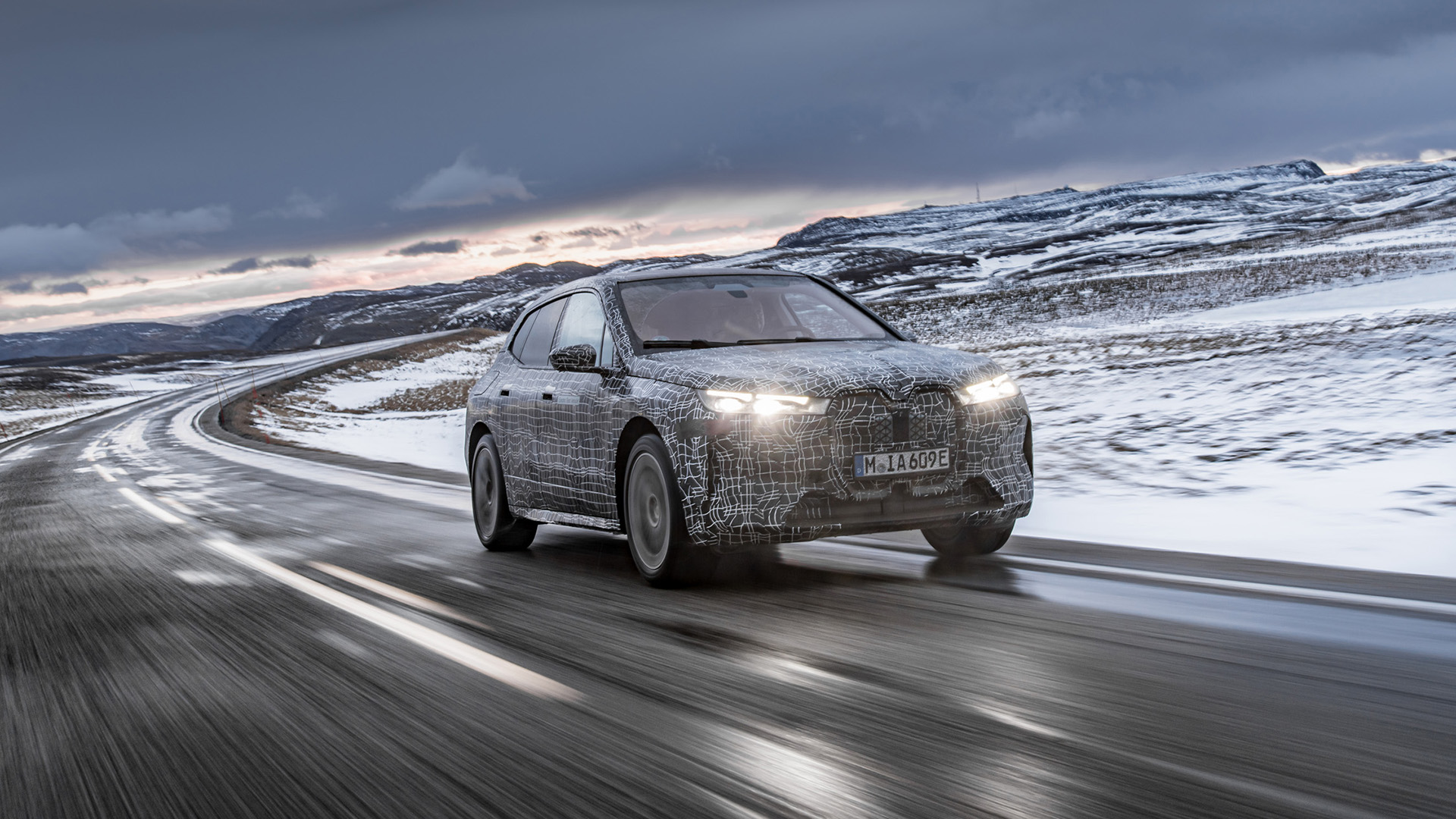

BMW’s new big-nosed electric crossover, the iX, is a huge deal for the brand. The Bavarians call it their technology flagship, and as such, this SUV crucially developed in-house promises up to 500 horsepower and a range of 300 miles based on the EPA test cycle—a figure that grows to over 372 miles using the European WLTP test cycle. The real-world range lies somewhere between those two, yet either way, BMW wants to achieve a combined power consumption of less than 21 kWh per 100 kilometers or the equivalent to 62.13 miles. That’s in line with what Tesla claims for its Model X P90 and P90D models.
Cold-weather testing is an important step in all vehicle development programs, yet with electric drive, temperature control is an even more pressing issue. BMW’s fifth-generation eDrive tech features high-voltage batteries and a quick charging system that need to perform on the coldest of days, maintaining optimum operation by the clever management system’s heat circulation to keep the batteries warm. When it comes to being plugged in, BMW claims the iX can go from 10 to 80 percent battery power in just 40 minutes, or gain 75 miles of range after just ten minutes on the charger.








BMW also says that it needed to drive to the North Cape of Europe to conclude this test, but as someone who drove a Miata with the top down in March to the same island of Norway, I would argue they did it mostly for the pictures and to have some fun.
Here’s the science behind my wild theory: Looking for some guaranteed cold in Scandinavia, carmakers usually end up in either Finland or Sweden to do their winter testing. Up high north in Finnish Lapland, the town of Ivalo acts as the main hub for the industry, with private proving ground Testworld and tire manufacturer Nokian’s own winter wonderland being the main attractions.
In Sweden, Luleå is a major city with a good airport and temperatures dropping well below -20ºF to freeze the northernmost arm of the almost saltless Baltic Sea. A touch further to the west, the town of Arjeplog is where Bosch built its winter test center. If you drive all the way up to Nordkapp, the northernmost point of Europe on the Norwegian island of Magerøya, you’ll hit both the deserted roads of Finland and Sweden before crossing the Norwegian border, only to realize that thanks to the Gulf Stream, the Norwegian coast is much warmer than the middle of the land further to the south, with the ocean straying free of ice, and the roads cut free from snow on a regular basis. Mind you, BMW has this to add:
“In the process, test engineers evaluate above all the interaction between drive and suspension systems on road surfaces with a low friction coefficient. Unsecured tracks, icy roads and ice surfaces especially prepared for test-driving on the edge of the Arctic Circle offer the ideal conditions to precisely coordinate the motor control technology, the electric four-wheel drive and suspension control systems right up to the limits of longitudinal and lateral vehicle dynamics.”
Indeed. Additionally, the final stretch of the route known as E69 is particularly tight and scenic, so I’m happy that BMW’s development team could drive their 500-horsepower electric crossover to Honningsvåg, the cute town where most who visit North Cape reside.




Got a tip on upcoming electric BMWs, Scandinavian living, or else? Send us a note: tips@thedrive.com